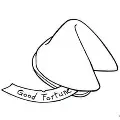If you work with groups of people, then you’re probably familiar with or actively using group contingencies. When supporting individuals in a group setting, minimizing disruptive behaviors and maximizing desirable behaviors is paramount to keeping things manageable. The Good Behavior Game (GBG) is one example of a group contingency with decades of evidence to support its effectiveness in helping accomplish just that.
The GBG is commonly used in classroom settings with elementary school children to increase engagement and diminish disruption. However, in 2019, Joslyn and colleagues published a review of the GBG in the prestigious Journal of Applied Behavior Analysis with information about its extended applications. In this blog, first, we’ll briefly review what the GBG is and then we’ll note some of the novel ways in which it’s been applied in recent years.
What is the Good Behavior Game?
Typically, when implementing the GBG, a group of individuals (like students in a classroom) are divided into teams, clear rules or expectation are set, and points are distributed to the teams based upon rule-breaking or failing to meet the set expectations. The team(s) that receive less than some predetermined number of points “win” and earn rewards.
In their article, Joslyn and colleagues (2019) mention that some of the potential behavioral mechanisms that are harnessed by the GBG include rule-governed behavior, differential reinforcement (of low rates of behavior), as well as the points themselves which function as both discriminative stimuli and conditioned reinforcers or punishers.
The GBG also promotes peer-mediated contingencies due to its interdependent nature. In other words, members of a given group are more likely to encourage their fellow group members to follow the rules or expectations so their group can succeed. As disruptive behavior is diminished, desirable behaviors should increase which, in turn, helps promote greater access to reinforcement from those individuals’ social sphere (e.g., parents, teachers, staff members, peers, etc.). The more reinforcement those desirable behaviors contact, the more likely they are to be strengthened and maintained over time. That sounds like a win-win situation to me.
Some Novel Applications of the Good Behavior Game
In recent years, the GBG has been used successfully with pre-school students as well as undergraduates. It has been utilized with more volatile populations like students with emotional and behavioral disorders, too. Its application has also been extended to help intervene on a wider array of behaviors like delinquency, class participation, and physical activity.
Some researchers have evaluated alternative procedural applications of the GBG. One such effective variation is the Caught Being Good Game where points are distributed to teams for following the rules or meeting set expectations (rather than breaking rules or failing to meet expectations).
Via component analysis, researchers have discovered that all critical elements of the GBG (rules, feedback, performance criterion, and contingent reinforcement) must be in place for optimal effect. Recent studies have also revealed that the GBG can have a positive impact on the implementer’s behavior (e.g., teachers, parents, staff, etc.) by increasing their delivery of praise and reinforcement (i.e., positive interactions) whilst simultaneously decreasing reprimands and punishment (i.e., negative interactions).
In Summary
As Joslyn and her fellow researchers (2019) bring to our attention, “the GBG appears to have strong social validity across multiple contexts” (p. 812). The more social validity an intervention has, the more likely people are to use it. If it proves effective, people tend to continue using it. Simple as that. Those who implement the Good Behavior Game recognize its value and effectiveness. Said another way, the GBG seems to be useful and user-friendly so if you work with groups, it might be worth your time and effort to explore the Good Behavior Game a bit further.
Reference:
Joslyn, R. P., Donaldson, J. M., Austin, J. L., & Vollmer, T. R. (2019). The Good Behavior Game: a brief review. Journal of Applied Behavior Analysis, 52, 811-815.
 By using our site, you consent to our use of cookies to enhance functionality and analyze site performance.
By using our site, you consent to our use of cookies to enhance functionality and analyze site performance.